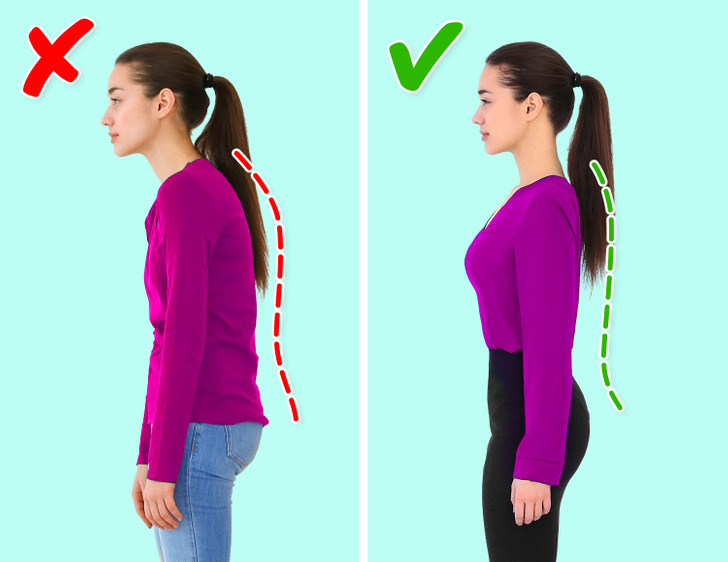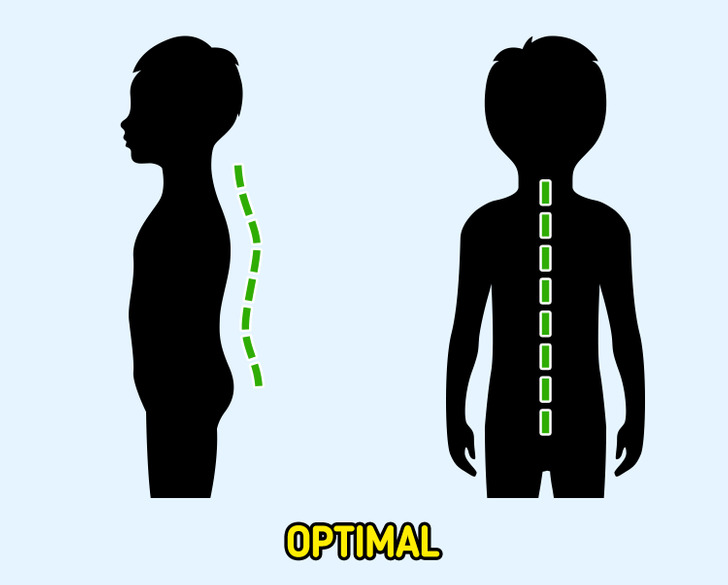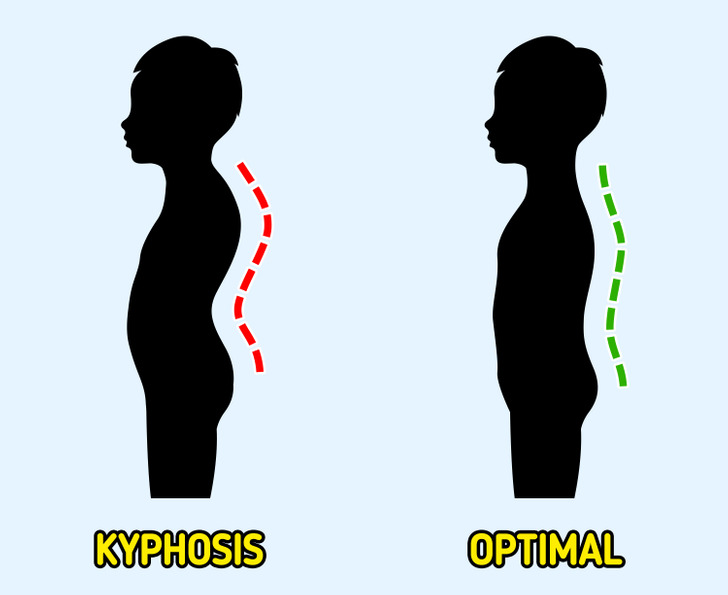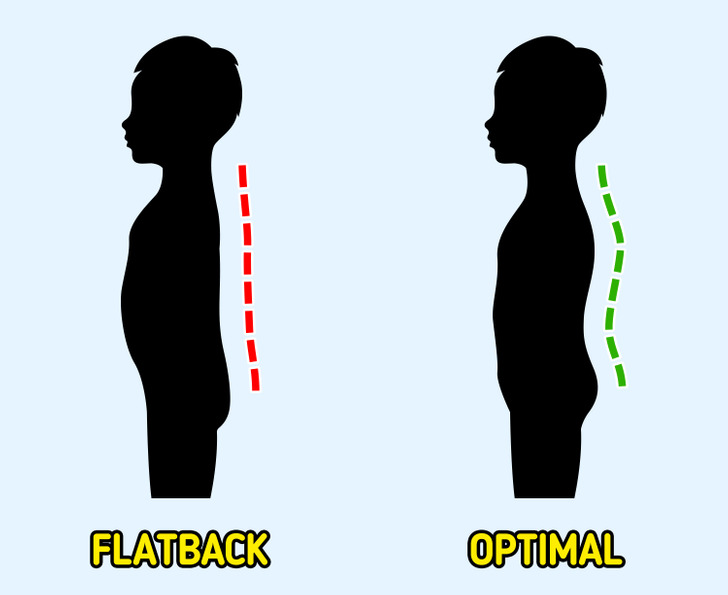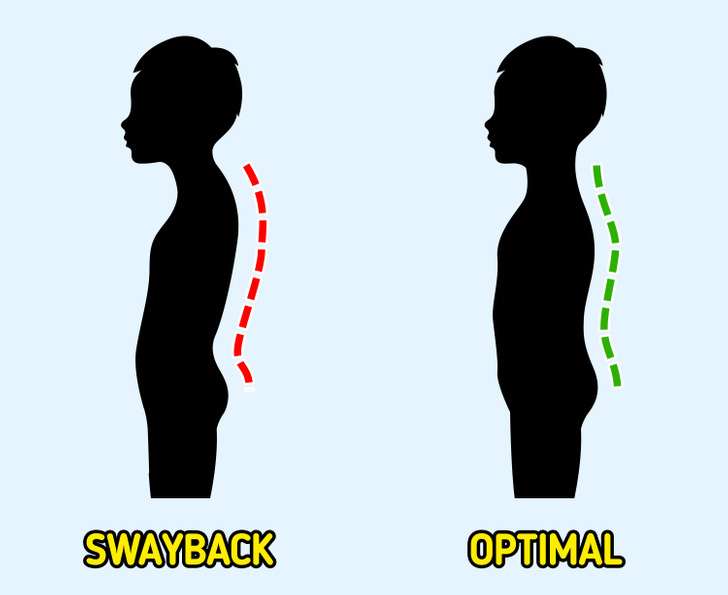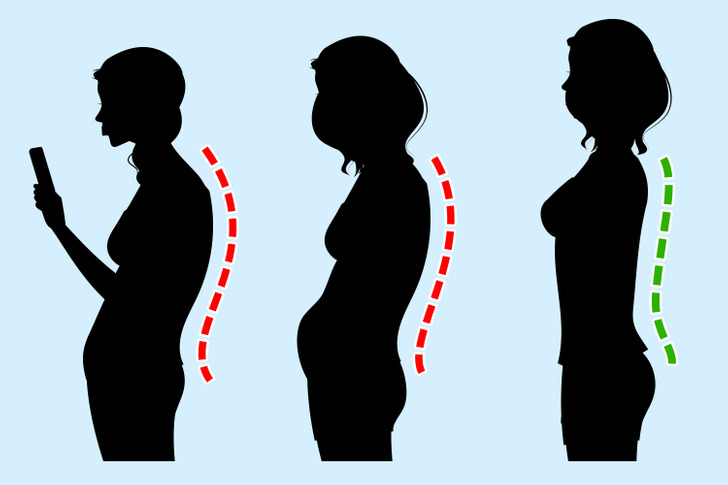How to Know Your Posture Type
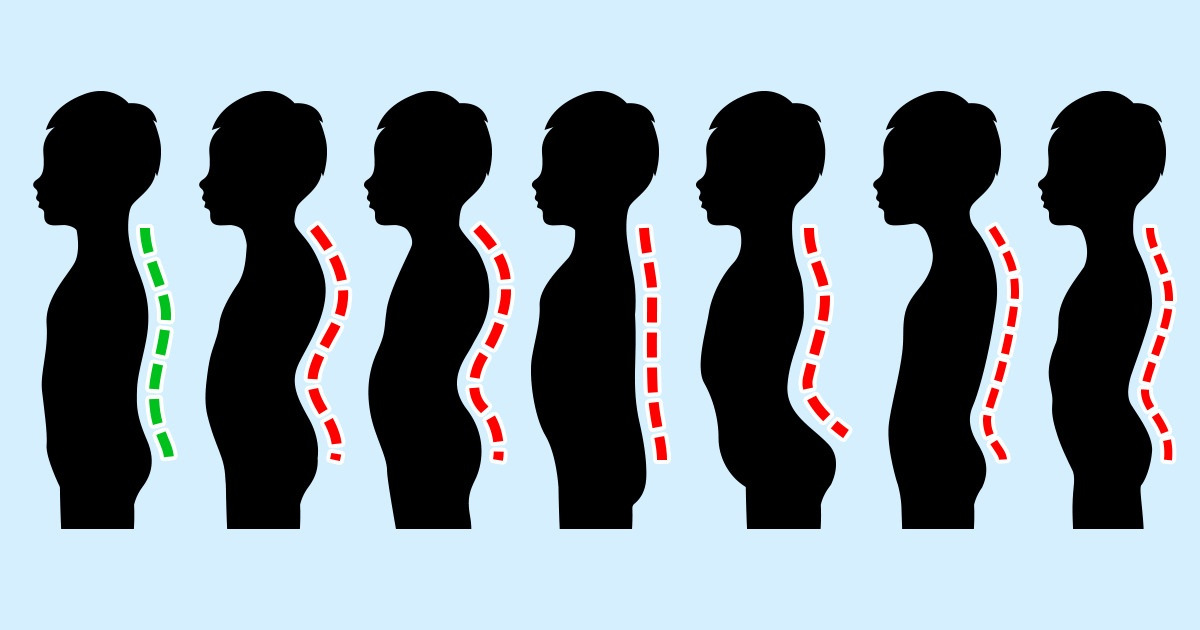
Posture plays a significant role in our everyday lives, affecting everything we do and feel. It can provide you with higher energy levels, more confidence, neck tension relief, etc. Good posture is having a neutral spine (the carrier of your body), where your muscle groups, joints, and ligaments are aligned in a balanced way, keeping your body flexible and fatigue-free.
5-Minute Crafts prepared this article to give you some tips for identifying your posture type and how to treat each one of them if it’s poor.
❗ Important: All the information represented in the article is for informational purposes only. If you’re experiencing any posture-related issues, consult with your physical therapist first.
What posture is
Posture is how your spine is aligned with your head, shoulders, and hips when moving (dynamic) or not (static). There are 5 different postures: good, kyphosis, flat back, swayback, and forward head.
How to assess it: Standing in front of a full-length mirror, keep your back and heels about 3 inches (7.5 centimeters) from the wall. You need to ensure your head is at your ears’ level in a straight line, your shoulders are even, there’s equal space between your arms, your kneecaps are pointing forward, and your ankles are straight.
1. Optimal posture
How to identify: Optimal posture is when your weight is even across your body with a good balance. When standing, if your ears are lined up over your shoulders, your shoulders are lined over your hips, and your hips are aligned over your ankles, you have a good posture.
How to maintain: Staying active is essential; you can do yoga, tai chi, etc. This way, you can continue practicing strong posture and poise while doing everyday activities, like watching television, washing dishes, or walking. You need to pay close attention to your weight, but you also need to wear comfortable shoes. If you’re someone working at a desk in front of a computer, etc., make sure it has an ergonomic setup.
2. Kyphosis
How to identify: People with kyphosis have a hunched-over appearance; in other words, they have an upper back region with a curvature around 20-50 degrees. It can be seen at any age and makes you appear as if you’re slouching. This posture is typical in office workers, the elderly, very tall people, and those who have very large breasts.
How to treat: If you have rounded shoulders with an excessive back curve, you may experience back pain or stiffness. A posture brace may help with your natural alignment.
3. Flatback
How to identify: The spine has a natural curve in optimal postures with 2 curves forming an “S” like shape. There isn’t curvature in the lower spine in flatback poses, leading the person to lean forward. Flatback is common in people doing lots of sit-up exercises and boxers. Standing up straight isn’t possible without back or leg pain in this posture.
How to treat: Some physical therapy, exercises, bracing, and posture training, as well as surgery, are among the solutions that need to be considered only after a consultation with your healthcare specialist.
4. Swayback
How to identify: If you sit a lot, your muscles may tighten up in your back, and your hips and pelvis are tilted forward. When you’re standing up, your shoulders will look like they’re forwarding back, and your head is tilted forward as if you’re leaning back with your stomach.
How to treat:
- With the help of a physical therapist and proper assessment, you can treat it by tightening muscles, like the ones in your hips, for example, and strengthening your weak muscles in the abdominals.
- Losing weight around the stomach or abdomen helps improve your posture, especially if you have excess weight.
- It’s good to take breaks if your time is spent sitting at a desk.
- Also, keep doing your exercises, otherwise, your posture may go back into swayback (lordosis).
5. Forward neck or head
How to identify: When the back is slumped, the neck and head are in a forward position so that the head extends too much, outing the shoulders. It’s also called “text neck” or “tech neck” because we hunch over our phones and computers, which causes a tilt in our neck. There may be tension, stiffness, or pain in the neck, shoulders, and back. A forward head posture may also be seen during the aging process if the upper body loses muscle strength.
How to treat: You can benefit from a posture corrector and combat it by doing some exercises or movements.
